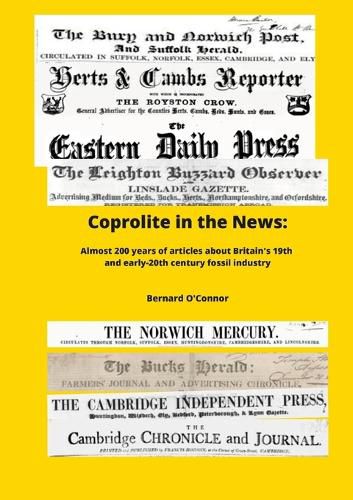Coprolite in the News
Bernard O'Connor

Coprolite in the News
Bernard O'Connor
This title is printed to order. This book may have been self-published. If so, we cannot guarantee the quality of the content. In the main most books will have gone through the editing process however some may not. We therefore suggest that you be aware of this before ordering this book. If in doubt check either the author or publisher’s details as we are unable to accept any returns unless they are faulty. Please contact us if you have any questions.
Between 1843 and 1918, tens of thousands of acres of Britain were dug over in the search for fossils. Pits were dug to excavate a fossil bone bed, some reaching forty feet deep, in cliffs, river banks and fields in Yorkshire, Norfolk, Suffolk, Cambridgeshire, Bedfordshire, Hertfordshire, Buckinghamshire, and Kent. Called 'coprolites' and thought by many to be fossilised prehistoric animal droppings, the best specimens were sent to museums As the deposit included teeth, bones, claws and shells of dinosaurs and other land and marine organisms, geologists disagreed about them being called fossilised poo. They preferred to term them phosphatic nodules. Their high phosphate content, the mineral needed to stimulate plant growth, led the bulk of the fossils to be sold and transported to chemical manure works, ground into a powder and dissolved in sulphuric acid to make superphosphate, the world's first chemical fertiliser. Landowners made fortunes from coprolite contractors who paid them initially for the number of tons raised from pits in their fields. Later, agreements were written up where they were paid for every acre, rood and perch worked. Thousands of men, women and children were employed in the coprolite or fossil pits, washing mills and manure works. Demand for phosphate rock was so great that geologists were sent overseas to locate potential supplies. The gradual exhaustion of the coprolite bed and imports Europe, Africa, the United States and Pacific islands caused this unusual branch of agricultural mining to disappear. Bernard O'Connor researched the boom and bust of the coprolite industry and 'Coprolite in the News' is a collection of hundreds of newspaper articles and contemporary illustrations which provide an overview of not only the social, economic and environmental impact of the diggings but also how the industry affected analytical chemists, geologists, archaeologists, surveyors, auctioneers, land agents, manure manufacturers, farmers, politicians, brewers and members of the religious and legal professions.
This item is not currently in-stock. It can be ordered online and is expected to ship in 7-14 days
Our stock data is updated periodically, and availability may change throughout the day for in-demand items. Please call the relevant shop for the most current stock information. Prices are subject to change without notice.
Sign in or become a Readings Member to add this title to a wishlist.


